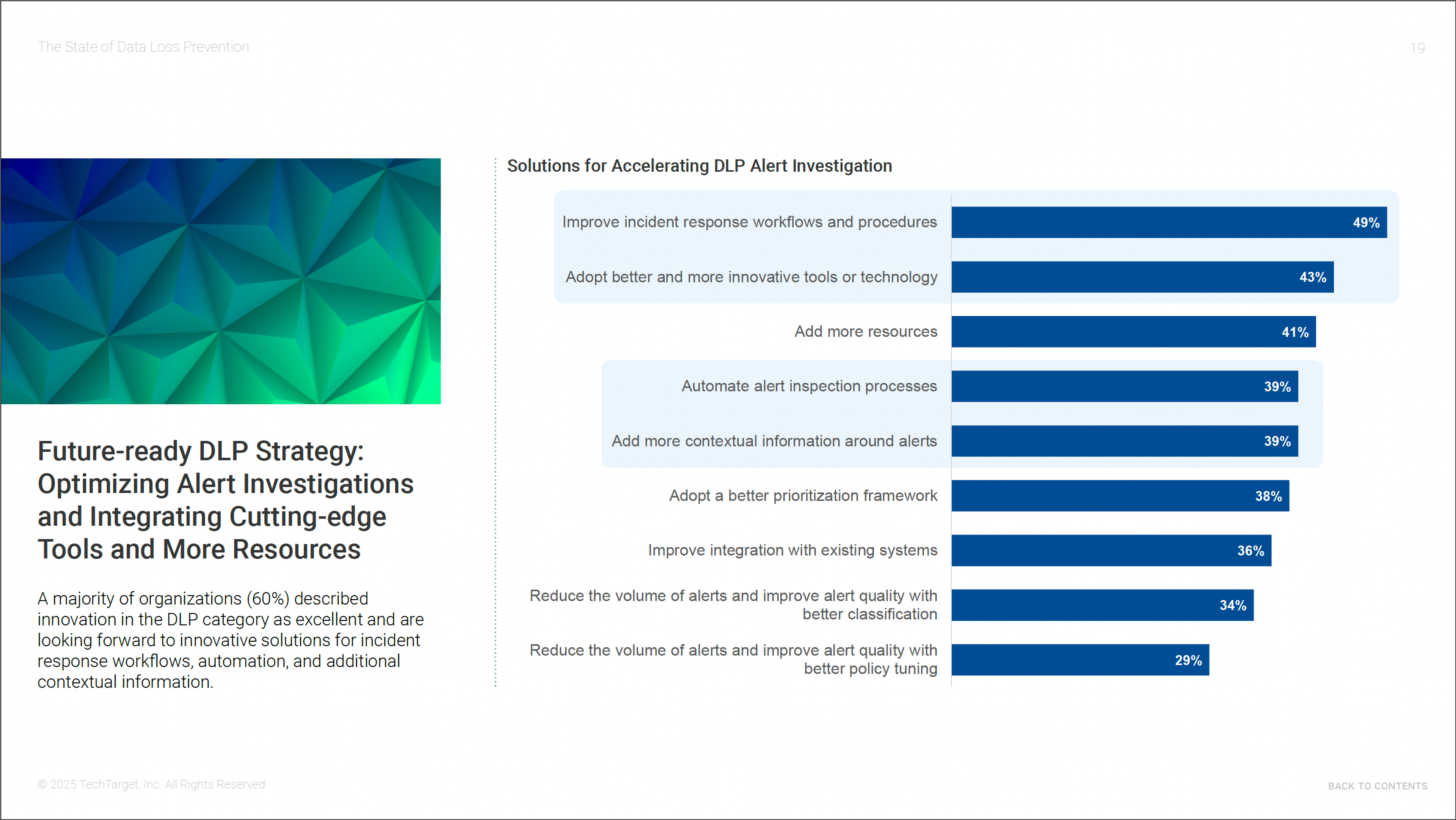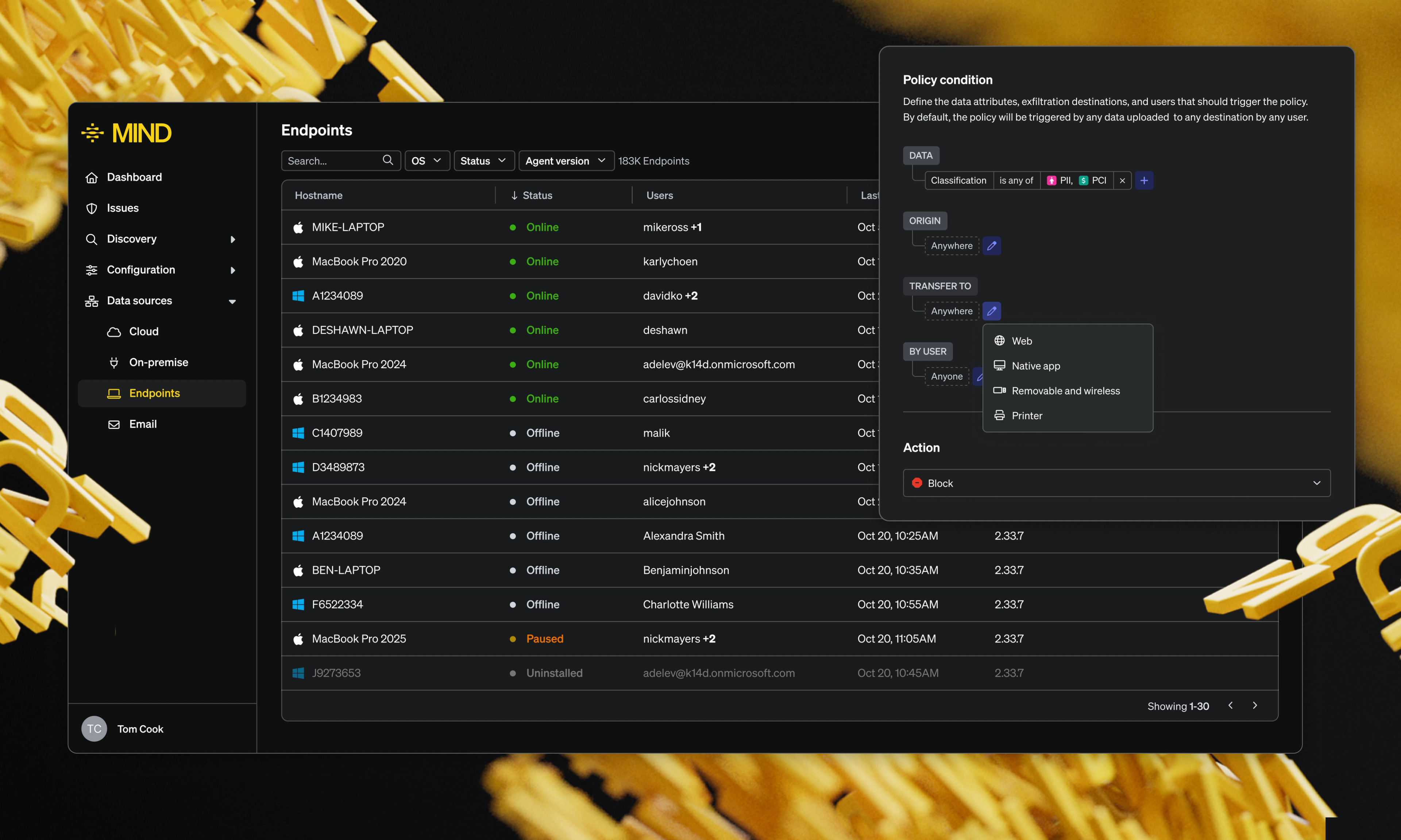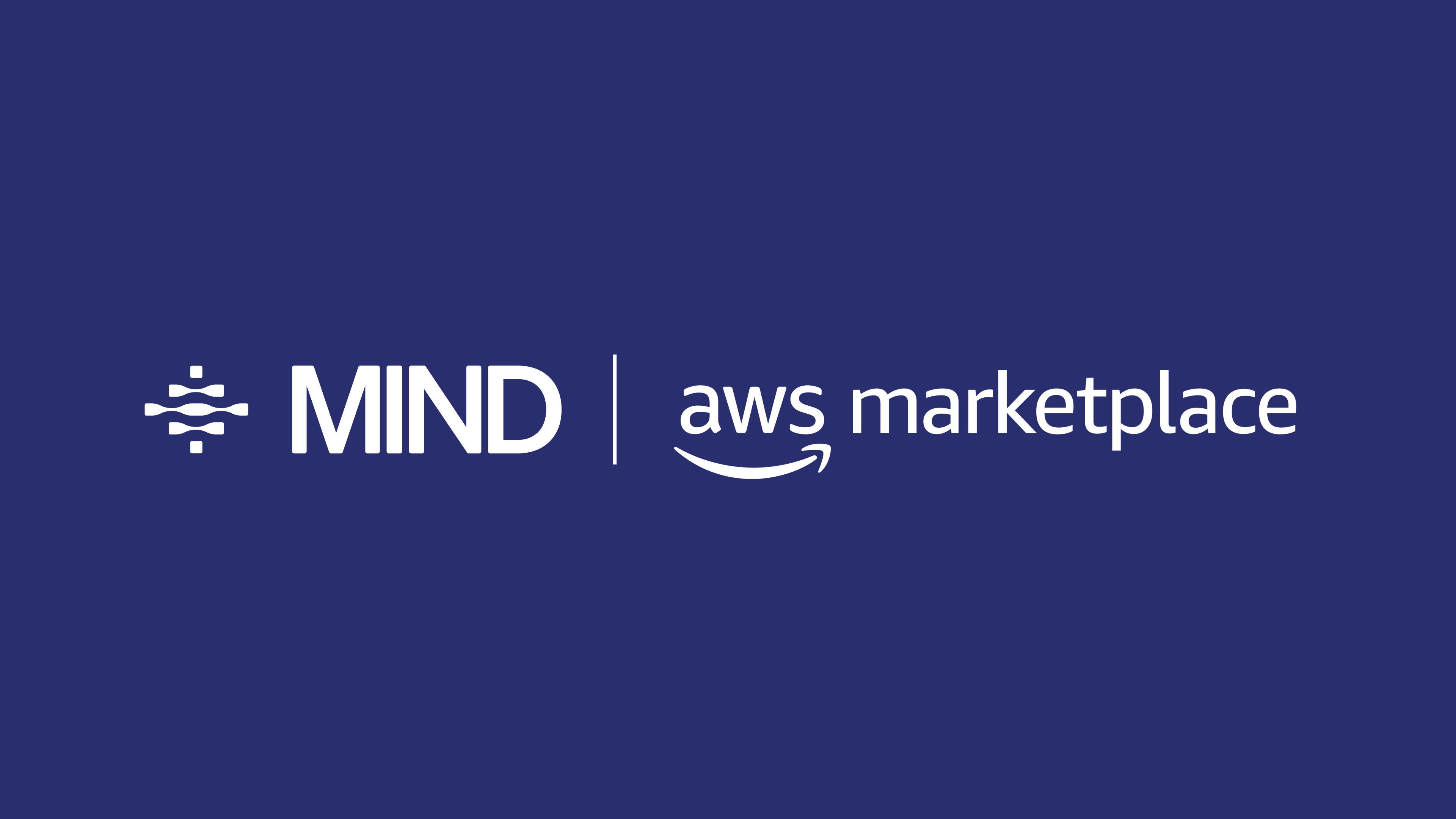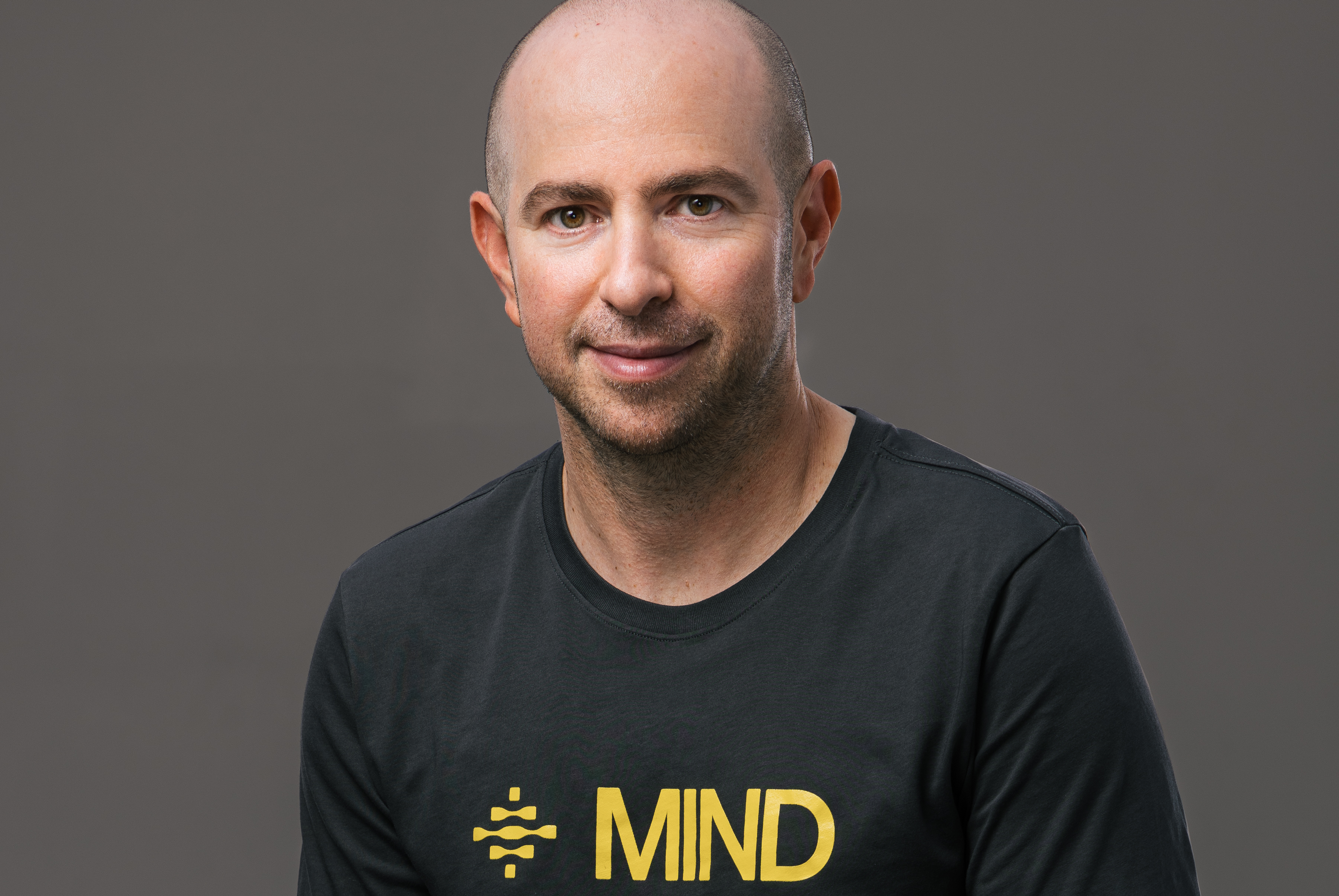Security leaders want confidence – not just in their tools, but in their ability to protect sensitive data, support business innovation and respond swiftly when risk arises. They want full visibility into their data landscape, clarity about what data is at risk and assurance that their security measures are both intelligent and adaptive. But they’re held back. By outdated tools that drown teams in false positives. By policies that are hard to tune and harder to trust. And by processes so brittle they slow innovation instead of supporting it. The desire to modernize is clear, but the path has been clouded by complexity, noise and inefficiency.
But something is shifting. According to The State of DLP Report, 60% of organizations say innovation in the category is “excellent.” Security teams are no longer settling for complexity disguised as control; they’re rethinking how DLP should work. They want more clarity. More intelligence. More confidence.
And they’re finding it in platforms like MIND.

The DLP dilemma
Let’s get specific: modern security leaders face a massive volume of unstructured data across SaaS, Gen AI, endpoints and emails. Their DLP alerts? More than 90% go unremediated or ignored. And nearly half are false positives.
That creates three critical problems:
- Teams are overwhelmed. Manual workflows and redundant tools sap resources that could be better spent.
- Security is reactive. Most incidents are addressed after the damage is done.
- Innovation stalls. Teams are afraid to enforce policies that might block productivity or trigger alert fatigue.
The result? An industry trapped in a compliance checkbox, not empowered to deliver real security outcomes.
Today's data security needs intelligent, automated DLP
Where traditional DLP ends, MIND begins. As the first complete data security platform – built from the ground up – to automatically discover, fix and prevent data leaks, MIND is designed for how data actually moves today.
Our approach combines posture management and real-time prevention in one unified platform. It's a holistic approach that redefines how data protection should operate in modern environments. MIND's data protection starts by discovering sensitive data, then classifying and protecting it using AI. It evaluates risks and triggers actions to prevent potential leaks and monitors data in use to ensure real-time protection. This layered approach safeguards sensitive information at rest, in motion and in use.
This end-to-end model allows teams to fix what matters and protect what’s next.
Rather than react to alerts, MIND helps organizations proactively understand what sensitive data they have, where it lives and who has access. That’s Posture, and MIND helps to remediate the sensitive data at rest. From there, we apply smart policies to prevent leaks as they happen, in motion and in use – without disrupting the business. That’s Prevention.
From friction to flow
OpenWeb and Noname Security are just two examples of companies that made the leap from legacy to modern DLP with MIND.
For OpenWeb, a digital community platform handling data from over 100 million users monthly, traditional DLP was a black hole of alert fatigue. MIND helped them reduce DLP resource allocation by 80% and eliminate false positives almost entirely.
“We’re definitely saving a lot of time not looking at irrelevant data and false positives. Resource-wise, probably a fifth of the time we spent managing our DLP program in the past.”
Yaron Blachman
CISO at OpenWeb
At Noname, a leader in API security, DLP alerts had become background noise. Their security team was numb to constant false alarms. After switching to MIND, they gained accuracy, context and control, cutting incident response time in half.
“MIND was a lot more accurate and I can't remember a single case where we had false positives.”
Mike Morrato
CISO & Global Head of IT at Noname Security
What’s consistent in both cases? Clarity. Confidence. And security that scales without slowing anything down.
The future is context-aware
The future of DLP must include fewer alerts. That’s why 91% of organizations say reducing alert noise is their top priority – and why 43% are prioritizing AI/ML-powered DLP solutions in their next investment cycle. It’s clear that the key to reducing is by embracing tools that understand the sensitive data you’re trying to protect and provide the right context about it.
MIND is leading that charge
MIND AI, our multi-layer AI classification engine, goes way beyond regular expression (RegEx) pattern matching. It understands context, differentiating between valid and inactive AWS keys, a source code file and a spreadsheet template. Only MIND AI can uniquely categorize sensitive file types (e.g. agreements, configuration files, scripts, board minutes, medical records, bank statements, contracts, tax forms, payroll reports and so much more) and classify specific sensitive records within those files (e.g. PCI, PII, PHI, credit card numbers, social security numbers, cloud keys, credentials, etc.). That’s how we enable real-time policy enforcement without disrupting work.
And by putting DLP on autopilot, MIND frees teams to focus on higher priorities, not endless manual triage.
MIND: Built for what’s next
Our mission is to help digital organizations thrive in this AI era. That means helping them innovate securely. Collaborate safely. And move fast without compromising data protection. We believe DLP shouldn’t be a barrier to innovation – it should be the engine that drives it forward.
With MIND, security leaders don’t just manage risk. They understand it. They fix it. And they prevent it before it becomes a problem.
Because when you mind what matters, the rest falls into place.
Read The State of DLP Report to understand the DLP innovations security leaders are demanding and looking forward to.
Ready to reimagine DLP? Book a demo and see how effortless data security can be.












